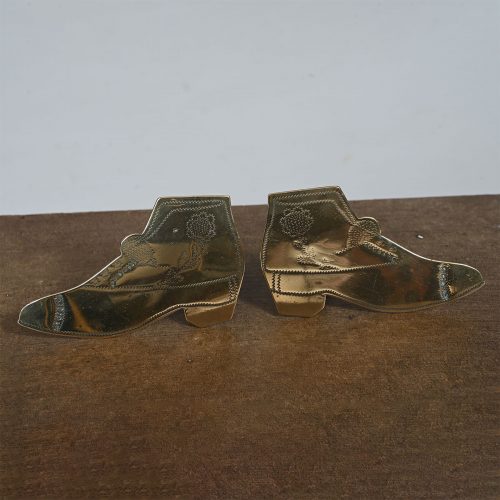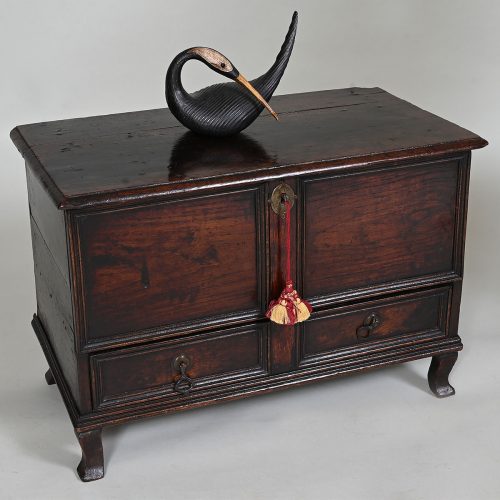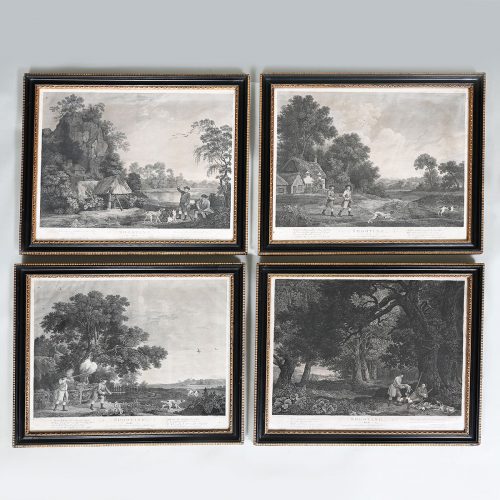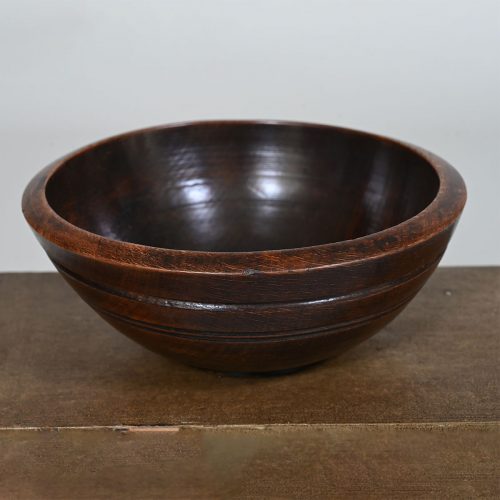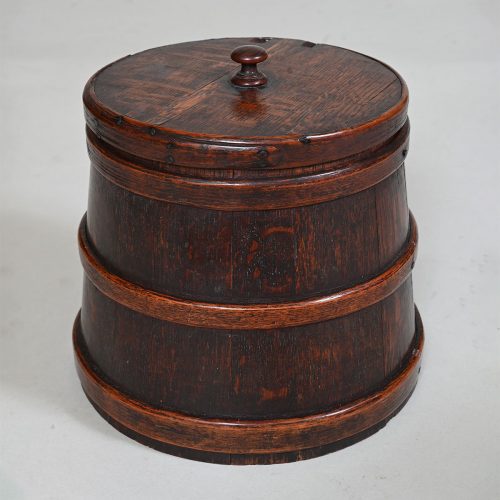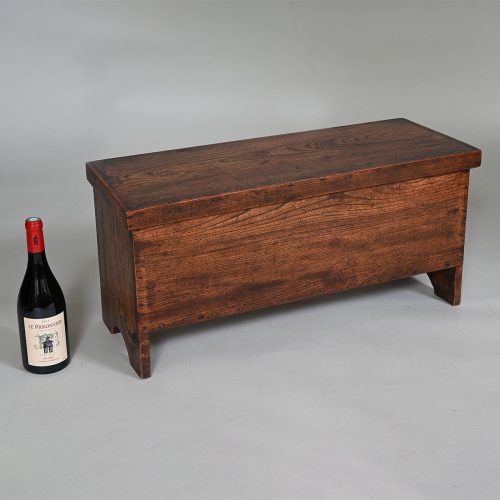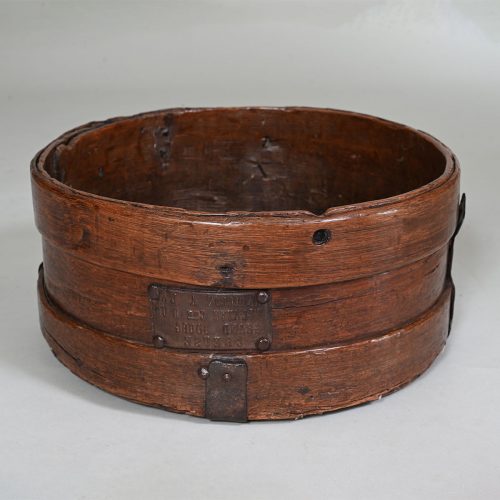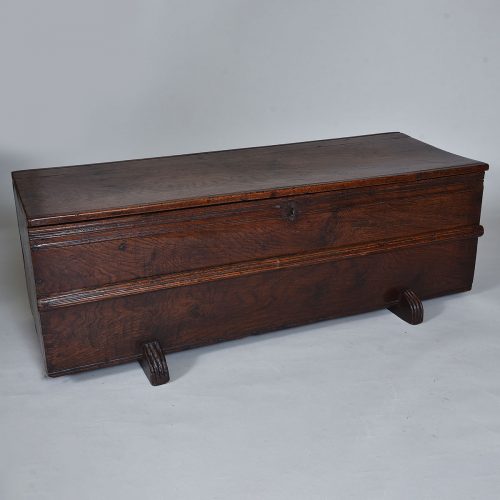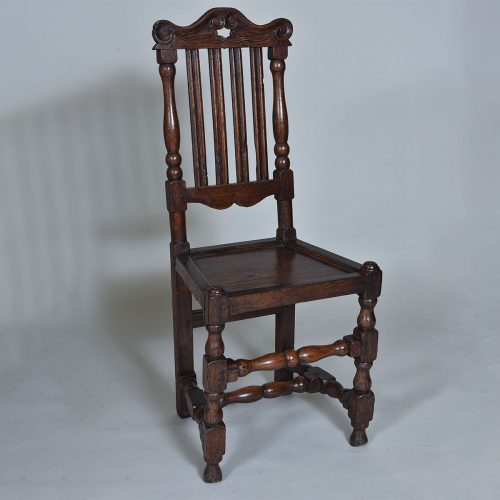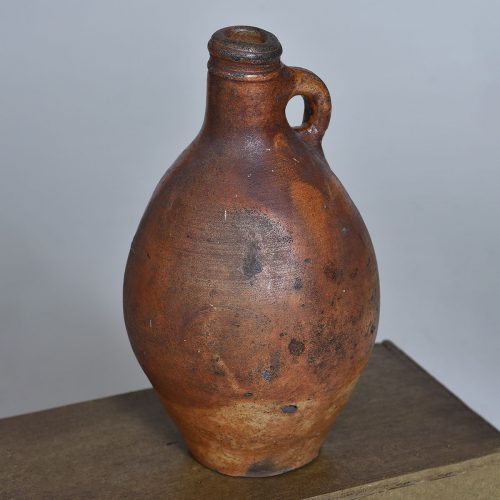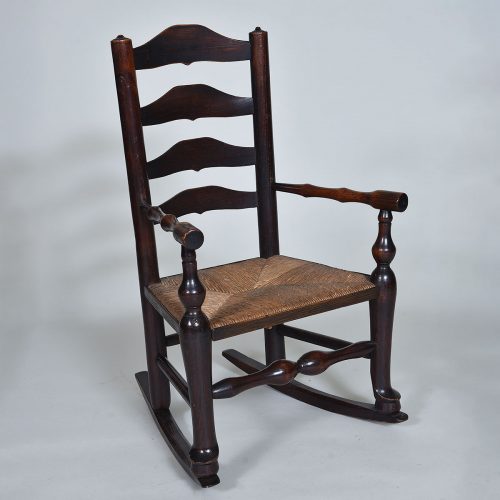Current Stock
-
Pair of Victorian brass shoes or boots Width: 4.5" / 12 cms Height: 3" / 8 cms
-
Rare 18th century Welsh Oak Coffer Bach
£1,450.00Mid 18th century Welsh Oak coffer bach or marriage/dowry chest. The lifting lid having a moudled edge and on lopers. The front with split moulding forming two panels above single long drawer again with split moulding. Very unusual short cabriole legs with feet reminiscent of American furniture. Circa 1740 Width: 27.5" / 69 cms Depth: 14" / 36 cms Height: 21.5" / 54 cms -
Set of four black and white stipple engravings after George Stubbs (1724-1806). In Hogarth Frames Shooting: Plates I to IV Engraved by William Woollett (1735-1785) Published by Thomas Bradford, London: 1769-71 Inscriptions below images, lower margins: “Geo. Stubbs pinx’t. William Woollett Sculp’t. Engraved after an Original Picture in the Possession of Mr. Bradford. Published by Thos. Bradford, No. 132 Fleet Street, London; as the Act directs…” respectively with the dates “Ist Aug’t. 1769” [Plate Ist], “30th Aug’t. 1770” [Plate IId.], “30th Sep. 1770” [Plate IIId.], and “25th Oct’r. 1771” [Plate IV]. A set of four prints depicting two men throughout a day of hunting, based on the original paintings by George Stubbs, the pre-eminent British horse artist of the 18th century. The engraver, William Woollett, was a friend of Stubbs and the most highly regarded landscape engraver of his day. An eight-line verse beneath each image (transcribed below) narrates the progress of the hunters, who have left “th’Environs of the Smoaky Town” for the countryside. The landscape is likely based on the forest around Creswell Crags, a limestone ravine on the edge of the Welbeck Estate, whose towering oak trees were rendered in many Stubbs paintings. In Plate I, the hunters load their guns before dawn as their dogs watch alertly. As the sun rises in Plate II, they follow the dogs who “Snuff the Air” for the scent of prey, passing a cottage with a thatched roof. Plate III shows the moment after the dogs have led the hunters to a hidden flock of birds. Sensing their presence, the birds attempt to fly away and one of the hunters shoots. Plate IV portrays the successful hunters at the end of the day, one about to add a hare to the day’s catch of birds and animals piled at the foot of a large oak tree. The theme of hunter and prey enacting a life-and-death drama was one of Stubbs’ recurring themes, which he also depicted in scenes of animals attacking other animals. An inscription beneath each title states that they were engraved after original paintings in the collection of the publisher, Thomas Bradford, and gives the date of issue — they were each issued separately between 1769 and 1771. The author of the verses is unknown; that the hunters are portrayed as ordinary townsfolk and not privileged landowners makes both the paintings and the poem unusual for that era (Egerton). The first scene was painted by Stubbs and purchased by Bradford after being exhibited at the Society of Artists in 1767. Bradford then commissioned the next three paintings in order to have images to publish a set of four prints to be sold by subscription (Lennox-Boyd). The original paintings were all exhibited at the Society of Artists over the next few years; today they are in the collection of the Yale Centre for British Art, a gift of Paul Mellon. The engravings are not identical to the paintings, possibly because some details were difficult to translate into engraving (Lennox-Boyd). Bradford died or retired around 1774, and the copperplates were sold. The images remained popular and firms such as Sayer & Bennett, Laurie & Whittle, Thomas Gosden, Boydell and Boydell’s successors continued to reprint and sell the engravings well into the 19th century. George Stubbs (1724-1806) was one of the greatest sporting artists of Georgian England. He combined science and art by painting animals with anatomical precision. After a visit to Rome and a period of residence in Liverpool, he returned to England in 1760. He also drew horses based on dissections, and in 1766 published a monumental series of engravings, Anatomy of the Horse, which cemented his reputation as a master of the subject. His vast body of work includes paintings of the prize horses of England of the late 18th century, often with their proud owners or trainers. He also painted hunting scenes, and wild animals such as lions and tigers, including some with lions stalking horses. Stubbs served as president of the Society of Artists in 1773 and though he had his quarrels with the Royal Academy, he exhibited there periodically and was elected as an Associate in 1780. Many of his paintings are in the world’s major museums, with a large number represented in the Yale Centre for British Art (Paul Mellon Collection). Some of the greatest engravers and printers of the day were engaged to render Stubbs’ animal pictures as prints, including William Woollett (1735-1785), and Stubbs’ son, the printmaker George Townley Stubbs (1756-1815) William Woollett was an engraver working in London, highly regarded for his landscape engravings and one of the first English engravers to become well known in Continental Europe. A pupil of John Tinney, he studied at St. Martin’s Lane Academy. His earliest engravings were topographical plates published by Tinney from around 1755 to 1757. He worked for the prominent publisher John Boydell from 1760. He exhibited at the Society of Artists from 1760 to 1777, and became a member in 1766, also serving as secretary for several years. From 1775 to 1785, Woollett served as Historical Engraver to the King. Woollett was also friends with the eminent painter George Stubbs, translating many of his paintings into engravings, including The Spanish Pointer, probably the most popular Stubbs dog print at the time. He is buried in Westminster Abbey. Width: 25" / 64 cms Height: 21" 54 cms
-
Treen Dairy Bowl
£140.00Small turned treen dairy bowl with lovely colour, patination and condition Diameter: 9.5" / 24 cms Height: 4" / 10 cms -
Treen Dry Goods Barrel
£295.00Lovely dry goods barrel/container of steamed and banded construction with lid and finial. Nice condition and colour. Diameter: 10" / 26 cms Height: 9" / 23 cms -
Very unusual child's or miniature Elm coffer. This could also have been a sample piece. The top with moulding sits on the coffer with no hinges or lopers. I have never seen anything similar. Circa 1800 Width: 29" / 74 cms Depth: 11.5" / 29 cms Height: 14" / 35 cms
-
19th century iron bound dry good contained with character! Seen action! Great for kindling or plants Width: 16" / 41 cms Height: 7.5" / 19 cms
-
17th century Continental Oak Coffer
£1,250.0017th century low oak Continental coffer on original sledge feet and retaining interior till. This coffer is very similar to chests from the Avesnes/Thiérache area of Eastern Picardy which date from the 1650-1725 period. The mid height moulding, sledge feet and construction are very similar. In St Andrew’s Church, Wickhambreaux, Kent there is a chest which bears a resemblance to these examples. Possibly the Kent chest was made in France and imported or that the chest was made by an immigrant craftsman. From 1681-1685 a large number of Huguenot refuges came to England which may explain this. Width: 54" / 137 cms Depth: 19" / 48 cms Height: 19" / 48 cms -
17th century Oak Chair
£225.00Late 17th century Oak side chair with a carved crest and slatted back. Inset panel seat with turned front stretcher united by straight side stretchers. Width: 18" / 46 cms Depth: 15" / 38 cms Height: 43" / 109 cms Seat Height: 18.5" / 47 cms -
17th century Oak Chest of Drawers
£1,650.0017th century Oak chest of drawers in two parts. The graduated drawers with geometric moulding. Original condition. Width: 38.5" / 98 cms Depth: 21.5" / 55 cms Height: 37.5" / 96 cms -
17th century Stoneware Jug
£225.0017th century stoneware jug with saltglaze finish Height: 12" / 31 cms -
Late 18th century Lancashire ladderback child's rocking chair with rush seat Width: 18" / 46 cms Depth: 19" / 49 cms Height: 31" / 79 cms Seat Height: 12" / 31 cms


